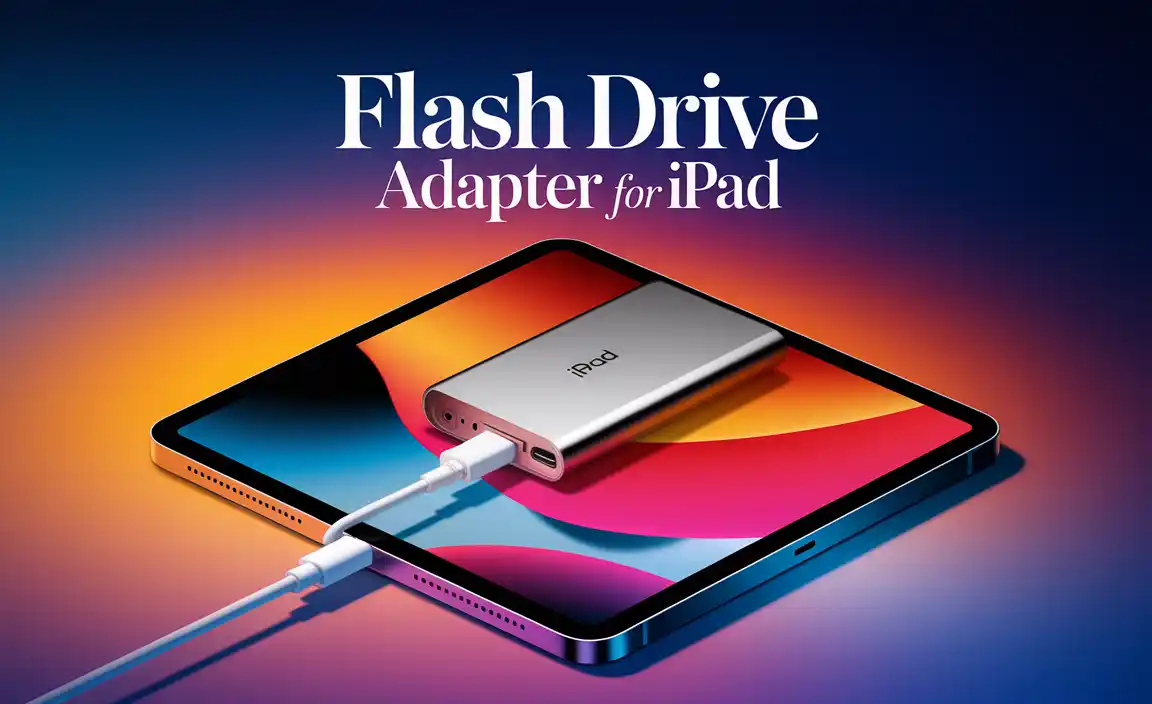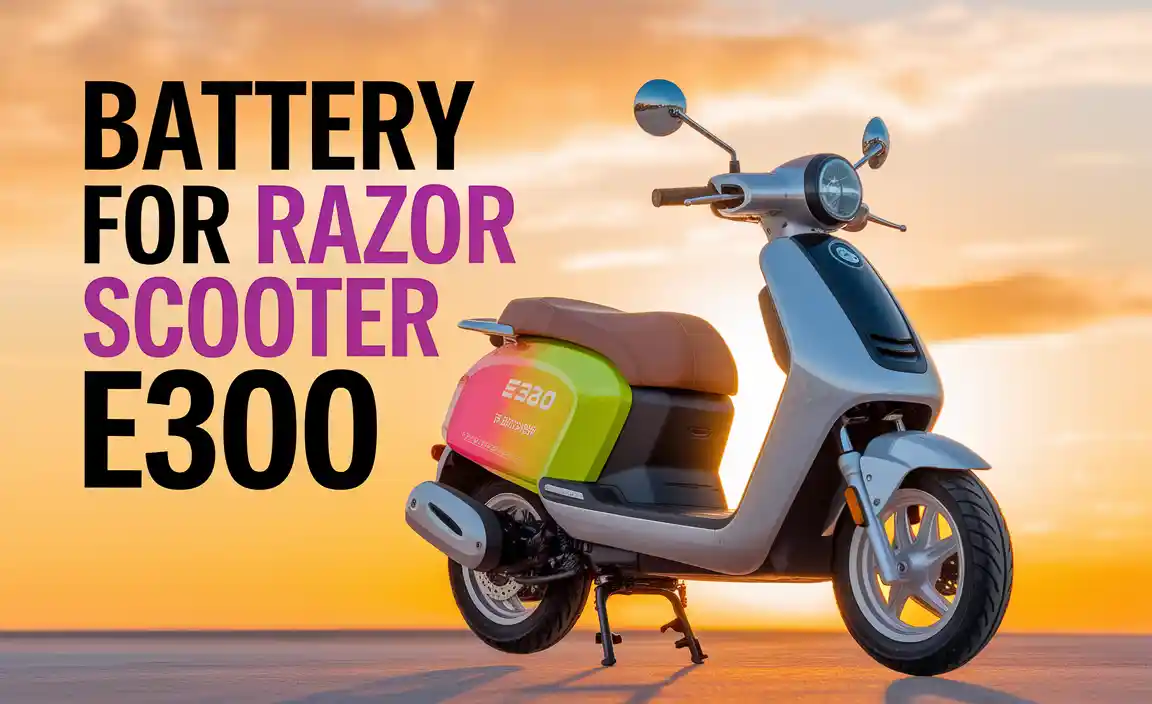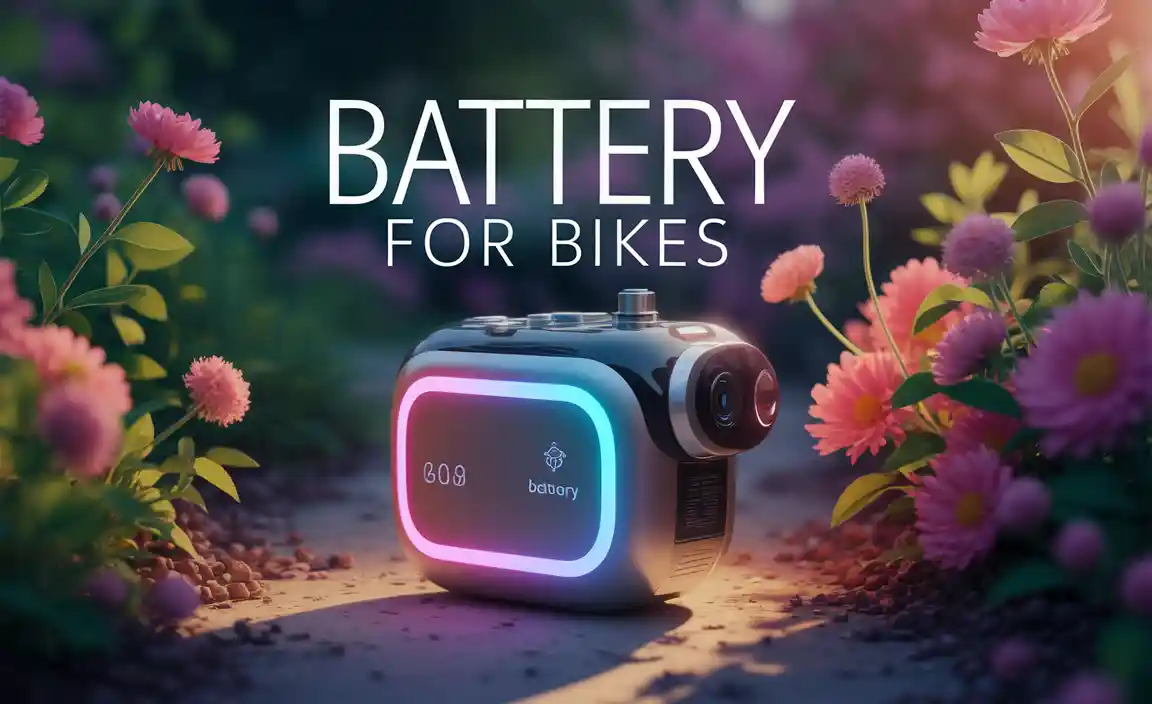Yes, you can use a Tesla Supercharger with a non-Tesla electric vehicle (EV) if you have the right adapter and your car supports Magic Dock technology or NACS charging. This guide explains the options, how to choose the best adapter, and safety tips to get you charging on the go.
Ever found yourself with a nearly empty battery, miles from home, and only a Tesla Supercharger in sight? It’s a common worry for EV drivers. For a long time, Superchargers were exclusive to Tesla vehicles. But things are changing, and now, with a little help, you might be able to tap into that convenient charging network, even with your non-Tesla car.
This might sound a bit complicated, but don’t worry! We’re going to break down exactly what you need to know, step by step. You’ll learn about the adapters, how they work with different cars, and what to look out for. By the end of this guide, you’ll feel much more confident about using Tesla Superchargers with your non-Tesla EV.
Understanding the Tesla Supercharger Network and Non-Teslas
The Tesla Supercharger network is one of the largest and fastest EV charging infrastructures in the world. It’s a big draw for Tesla owners, offering quick top-ups on road trips. For drivers of other EV brands, accessing this network used to be impossible.
However, there’s been a significant shift. Many automakers are planning to adopt Tesla’s North American Charging Standard (NACS) port. This means that, in the future, more non-Tesla EVs will have a charging port that can directly plug into NACS chargers. For now, though, adapters are the key to bridging the gap.
The main challenge has been the different charging connector types. Tesla vehicles use the NACS connector, while most other EVs in North America use the CCS (Combined Charging System) connector. This is where adapters come into play, acting as a translator between the two systems.
The Magic of the Magic Docg: A Game Changer
Tesla has introduced a feature called “Magic Dock” at some of its Supercharger stations. This is a built-in adapter that allows CCS-enabled EVs to use Tesla’s NACS chargers without the driver needing a separate physical adapter. You simply plug in your car, and the Magic Dock on the Supercharger station extends to connect with your car’s CCS port.
How Magic Dock Works:
- When a compatible non-Tesla EV pulls up, the Supercharger unit recognizes it.
- A mechanism within the Supercharger physically extends the NACS connector to mate with the EV’s CCS port.
- The charging session is then initiated and managed through the Tesla app and the vehicle’s charging system.
This is a fantastic step towards a more interoperable charging future. However, not all Supercharger stations have the Magic Dock hardware installed yet. Plus, your non-Tesla vehicle needs to be compatible with this system. Tesla has stated that vehicles need to support CCS charging as their primary DC fast charging standard to work with Magic Dock. You can check if a specific Supercharger station is equipped with Magic Dock through the Tesla app.
For the latest information on which stations support Magic Dock and which non-Tesla vehicles are compatible, it’s always best to check Tesla’s official announcements or resources like the U.S. Department of Energy’s Alternative Fuels Data Center (AFDC) website, which tracks charging infrastructure developments.
Adapters: Your Bridge to Tesla Supercharging
When a Supercharger station doesn’t have a Magic Dock, a physical adapter is your best friend. These adapters essentially convert the Tesla NACS connector to a connector that your non-Tesla EV can accept, typically CCS. It’s important to note that while many adapters exist, Tesla has not officially released or endorsed a widespread adapter for non-Tesla vehicles to use their Supercharger network directly via third-party adapters. However, some third-party manufacturers have developed adapters that claim to work.
The primary type of adapter you’ll be looking for is a NACS (Tesla) to CCS adapter. These are designed to allow a vehicle with a CCS charging port to connect to a Tesla Supercharger’s NACS cable.
How Third-Party Adapters Work
These adapters typically consist of two main parts:
- The NACS end: This part plugs directly into the Tesla Supercharger cable’s connector.
- The CCS end: This part is designed to plug into your non-Tesla EV’s CCS charging port.
The adapter contains the necessary internal wiring and, crucially, communication pins to allow the Supercharger and your car to talk to each other. This communication is vital for initiating charging, managing power flow, and ensuring safety.
Important Considerations for Adapters:
- Official vs. Third-Party: As mentioned, Tesla hasn’t officially launched its own adapter for widespread use by non-Teslas on Superchargers. Relying on third-party adapters comes with inherent risks and compatibility questions.
- Vehicle Compatibility: Not all CCS-equipped vehicles are guaranteed to work with these adapters. Some cars have specific communication protocols that might not be fully supported by the adapter or the older Supercharger hardware.
- Supercharger Version: Earlier versions of Superchargers (like v2) might have different communication protocols than newer ones (like v3 or v4). The adapter needs to be compatible with the Supercharger version you are attempting to use.
- Charging Speed: These adapters might not always support the maximum charging speeds of newer Superchargers, even if your car can handle it.
- Payment and Authentication: You’ll likely still need the Tesla app to initiate charging and pay, even with an adapter. The process can be less seamless than using a Tesla or a Magic Dock-enabled Supercharger.
Where to Find Adapters (with caution)
You might find NACS to CCS adapters from various online EV accessory retailers. Websites that specialize in EV parts or general electronics marketplaces are common places to look. However, it’s crucial to do thorough research:
- Read Reviews: Look for reviews from other non-Tesla EV owners who have successfully used the adapter with a similar vehicle.
- Check Specifications: Ensure the adapter explicitly states compatibility with CCS-equipped vehicles and Tesla Superchargers.
- Warranty and Support: Opt for adapters from reputable brands that offer a warranty and customer support.
- Safety Certifications: Look for any safety certifications or compliance marks.
For a comprehensive overview of EV charging connectors and standards, the U.S. Department of Energy’s AFDC provides excellent, reliable information on charging infrastructure, which can help you understand the technical aspects better. Learn more about EV Charging at AFDC.
Choosing the Right Adapter: What to Look For
If you decide to go the adapter route for your non-Tesla EV to use Tesla Superchargers, getting the right one is paramount. It’s not just about plugging and playing; safety and functionality are key.
Key Features to Consider:
- Connector Type: Ensure it’s specifically a NACS (Tesla) to CCS adapter. Don’t confuse it with adapters for other charging standards.
- Max Charging Rate: Check the maximum amperage and voltage the adapter can handle. It should ideally match or exceed your car’s maximum DC fast charging capabilities. For example, if your car can charge at 150 kW, the adapter should support at least that.
- Build Quality and Durability: These adapters can be exposed to various weather conditions. Look for robust materials and a design that can withstand outdoor use.
- Communication Protocols: A good adapter needs to accurately translate the communication signals between the Tesla Supercharger and your car. Poor communication can lead to charging failures or safety issues.
- User Feedback: Search for specific reports of the adapter working with your particular EV model and Tesla’s Supercharger generations (e.g., v2, v3).
Adapter Compatibility Table
While a definitive, universally guaranteed list is hard to come by due to the evolving nature of this technology and third-party products, here’s a general idea of what you might encounter. Remember, this is for informational purposes and does not guarantee compatibility. Always check manufacturer specifications and user reviews.
| Adapter Type | Input (Tesla Supercharger) | Output (Non-Tesla EV) | Typical Use Case | Key Considerations |
|---|---|---|---|---|
| NACS to CCS Adapter | Tesla NACS Connector | CCS (Type 1 in North America) Connector | Allows CCS-equipped EVs to use Tesla Superchargers. | Requires Tesla app, vehicle compatibility, Supercharger version support, potential speed limitations. |
Safety and Reliability
When dealing with high-voltage charging equipment, safety is non-negotiable. Using an adapter that isn’t designed or manufactured correctly could lead to:
- Damage to your vehicle’s charging port or battery system.
- Damage to the Supercharger station.
- Fire hazards or electrical shock.
- Inability to charge, leaving you stranded.
It’s why thorough research and sticking to reputable sources for information and products are so important. If a deal seems too good to be true, or if the seller lacks clear specifications and reviews, it’s best to steer clear.
Step-by-Step Guide: Using a Tesla Supercharger with an Adapter (Non-Tesla EV)
Once you have a compatible adapter and a non-Tesla EV that supports it, here’s a general process. Remember, this can vary slightly based on the adapter and your car model.
Before You Go:
- Check for Magic Dock: Use the Tesla app or PlugShare to see if the Supercharger station has Magic Dock compatibility for non-Teslas. If it does, you might not need an adapter.
- Verify Vehicle Compatibility: Confirm your specific EV model is known to work with NACS to CCS adapters or Magic Dock. Check manufacturer forums or EV enthusiast communities.
- Prepare the Tesla App: Ensure you have the Tesla app installed on your smartphone and that you have a payment method added. You’ll need this to initiate charging.
- Carry the Adapter Safely: Store your adapter in a convenient and protected place in your vehicle.
At the Supercharger Station:
- Park Your EV: Park your vehicle so that the charging port is accessible to the Supercharger cable.
- Connect the Adapter to the Supercharger Cable: Take the NACS end of your adapter and firmly plug it into the Tesla Supercharger connector. You should hear or feel it click into place.
- Connect the Adapter to Your EV: Take the CCS end of the adapter and plug it into your non-Tesla EV’s charging port. Ensure it’s securely seated.
- Open the Tesla App: Launch the Tesla app on your smartphone.
- Select the Supercharger Station: Navigate to the Supercharger station location in the app.
- Start Charging: There should be an option in the app to “Start Charging” or similar. Select this. The app will attempt to communicate with the Supercharger and your vehicle through the adapter.
- Monitor Charging: Watch your car’s dashboard and the Tesla app for confirmation that charging has begun. You’ll be able to see charging speed, estimated time to full, and cost.
- Finishing Charging: When you’re ready to stop, you can typically stop charging via the Tesla app. Unplug the CCS connector from your car first, then the NACS connector from the adapter, and finally, disconnect the adapter from the Supercharger cable.
Important Safety Note:
Always unplug from your vehicle first, then the adapter from the Supercharger cable. Never force any connections. If something doesn’t fit smoothly, stop and re-check. If you encounter any errors or unexpected behavior, disconnect immediately and consult your vehicle’s manual or contact support.
When Adapters Aren’t the Best Option
While the idea of using Tesla Superchargers with a non-Tesla EV is appealing, it’s important to be realistic about the limitations of adapters.
Reasons to be Cautious:
- Reliability: Third-party adapters can be finicky. They might work one day and not the next, or only with certain Supercharger versions. This can be frustrating and unreliable for drivers who count on consistent charging.
- Speed Limitations: Even if your car can handle faster charging, the adapter might bottleneck the speed, resulting in slower charging than you would get at a Tesla Supercharger with a Tesla vehicle, or even some non-Tesla DC fast chargers.
- Cost: While adapters can seem like a good investment, purchasing one, only to find it doesn’t work reliably with your car or specific Superchargers, can be a waste of money.
- Voiding Warranties: In some rare cases, using unofficial charging equipment could potentially affect your vehicle’s warranty if it causes damage. It’s wise to check your car manufacturer’s guidelines.
- Availability of Alternatives: Many non-Tesla EVs are compatible with other major charging networks like Electrify America, ChargePoint, EVgo, and others. These networks are often more readily available and designed for all EV brands, offering a more straightforward charging experience.
For many drivers, sticking to non-Tesla charging networks is simpler and often just as convenient, especially if they plan their routes effectively and have home charging. The push for NACS adoption by other automakers is a positive sign for the future, but for now, adapters are a solution with caveats.
The Future is Interoperable: NACS Adoption
The landscape of EV charging is rapidly evolving, and the adoption of Tesla’s NACS standard by other major automakers is a huge development. Companies like Ford, GM, Rivian, and others have announced plans to integrate NACS ports into their future EVs or provide adapters for their current models to use NACS chargers.
What this means for you:
- Future EVs: New electric vehicles from many brands will likely come standard with NACS ports, allowing them to plug directly into Tesla Superchargers (and other NACS chargers) without any adapters.
- Retrofit Adapters: Many automakers are also planning to offer their own official adapters for existing CCS-equipped vehicles to use NACS chargers. These are expected to be more reliably compatible than current third-party options.
- Increased Access: As more cars adopt NACS, Tesla is also opening up its Supercharger network to non-Tesla EVs through its app and the Magic Dock initiative, making charging more accessible to everyone.
- Standardization: This move towards NACS helps standardize charging, potentially simplifying the experience for all EV drivers and reducing the need for complex adapter solutions.
This eventual interoperability is what the EV community has been waiting for. It promises a more streamlined and convenient charging experience, reducing “range anxiety” and making EV ownership more appealing to a wider audience. For the latest updates on which automakers are adopting NACS and when, keep an eye on automotive news outlets and official manufacturer announcements.
Frequently Asked Questions (FAQ)
Q1: Can any non-Tesla car use a Tesla Supercharger?
A: Not directly. For a non-Tesla car to use a Tesla Supercharger, it either needs to support Tesla’s “Magic Dock” technology at compatible stations, or the driver needs a NACS to CCS adapter, provided their vehicle is compatible with such adapters.
Q2: What is Magic Dock?
A: Magic Dock is a hardware feature built into some Tesla Supercharger stations that allows CCS-compatible EVs to plug in and charge using an integrated adapter. It’s Tesla’s way of enabling non-Teslas to charge without a separate physical adapter.
Q3: Do I need a special Tesla Supercharger adapter for my non-Tesla EV?
A: If the Supercharger station doesn’t have Magic Dock, and your car has a CCS port, you’ll need a third-party NACS to CCS adapter. Tesla has not officially released its own widely available adapter for this purpose.
Q4: Where can I buy a NACS to CCS adapter?
A: These adapters are typically sold by third-party EV accessory retailers online. Always buy from reputable sources, check reviews carefully, and confirm compatibility with your specific vehicle.
Q5: Are third-party Tesla Supercharger adapters safe to use?
A: Safety depends heavily on the adapter’s quality and design. While many work, there’s always a risk with unofficial equipment. Always prioritize adapters from trusted manufacturers with good reviews. Always follow safety guidelines when charging.
Q6: Will my non-Tesla EV charge at the same speed as a Tesla at a Supercharger using an adapter?
A: It depends. Your car’s charging speed capability




